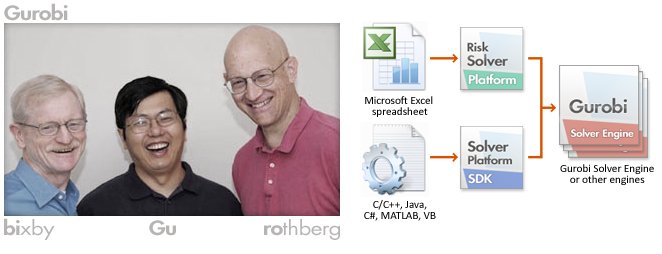Optimization is used in a wide range of fields and industries, including:
- Engineering: Optimization is used to design and improve products and processes in fields such as aerospace, mechanical, electrical, and chemical engineering.
- Operations Research: Optimization techniques are applied to improve decision-making in complex systems such as supply chain management, logistics, and transportation.
- Finance: Optimization is used in portfolio optimization, risk management, and financial modeling.
- Machine Learning: Optimization is used to optimize machine learning models by minimizing loss functions and improving accuracy.
- Marketing: Optimization techniques are used to optimize marketing campaigns, such as search engine optimization (SEO) and targeted advertising.
- Health Care: Optimization is used in medical research, drug discovery, and treatment planning.
- Energy: Optimization techniques are used to improve energy efficiency, reduce energy consumption, and optimize renewable energy systems.
These are just a few examples of the many areas where optimization is used. Optimization can be applied to almost any problem that involves finding the best solution from a set of possible solutions.
There are many optimization solvers, along with their main features and programming languages supported are listed here below:
| Solver | Features | Programming Languages |
|---|---|---|
| PuLP | Linear programming, integer programming, mixed-integer programming | Python |
| Pyomo | Linear programming, integer programming, mixed-integer programming, nonlinear programming | Python |
| scipy.optimize | Nonlinear optimization, linear programming, integer programming | Python |
| COIN-OR Linear Programming (CLP) | Linear programming | C++, Java, Python, R, MATLAB |
| COIN-OR Branch-and-Cut-and-Price (CBC) | Mixed-integer programming | C++, Java, Python, R, MATLAB |
| GLPK | Linear programming, mixed-integer programming | C, C++, Java, Python, R, MATLAB |
| Gurobi | Linear programming, integer programming, mixed-integer programming, quadratic programming | C, C++, Java, Python, R, MATLAB |
| IBM ILOG CPLEX Optimization Studio | Linear programming, integer programming, mixed-integer programming, quadratic programming | C++, Java, Python, R, MATLAB |
| KNITRO | Nonlinear optimization, linear programming, integer programming | C++, Python, MATLAB |
| LINDO | Linear programming, integer programming, quadratic programming | C++, Java, Python, R, MATLAB |
| MINOS | Linear programming, nonlinear programming | C++, Python |
| MOSEK | Linear programming, integer programming, quadratic programming | C, C++, Java, Python, R, MATLAB |
| NEOS | Various optimization problems | Web interface |
| NLopt | Nonlinear optimization | C, C++, Python, MATLAB, R |
| OpenOpt | Nonlinear optimization, linear programming, integer programming | Python |
| OPT++ | Nonlinear optimization | C++ |
Please note that this is not an exhaustive list, and there are many other optimization solvers available. Also, some of the solvers listed above have commercial versions with additional features and support.
Example
Linear programming can be solved using Python programming language by utilizing optimization packages such as PuLP, Pyomo, and scipy.optimize. Here is an example of solving a linear programming problem using PuLP:
import pulp
Create a maximization problem instance
problem = pulp.LpProblem('LP Problem', pulp.LpMaximize)
Define decision variables
x1 = pulp.LpVariable('x1', lowBound=0)
x2 = pulp.LpVariable('x2', lowBound=0)
Define objective function
problem += 3 * x1 + 2 * x2
Define constraints
problem += 2 * x1 + x2 <= 8
problem += x1 + x2 <= 6
problem += x1 <= 4
Solve the problem
status = problem.solve()
Print the status and optimal solution
print('Status:', pulp.LpStatus[status])
print('Optimal Solution:')
print('x1 =', pulp.value(x1))
print('x2 =', pulp.value(x2))
print('Objective value =', pulp.value(problem.objective))
In this example, we define a maximization problem instance using PuLP. We define two decision variables, x1 and x2, and an objective function 3×1 + 2×2. We also define three constraints. We then solve the problem using the solve() method of the problem instance.
The output of this code will be:
Status: Optimal
Optimal Solution:
x1 = 2.0
x2 = 4.0
Objective value = 14.0
This means that the optimal solution is x1 = 2, x2 = 4, and the maximum value of the objective function is 14. This solution satisfies all the constraints of the problem.
Compare
Comparing the performance of optimization solvers can be challenging since it depends on many factors such as the problem size, complexity, structure, and the solver’s algorithmic implementation. However, here is a performance comparison of some popular optimization solvers for a benchmark set of linear programming problems:
| Solver | LP Solver (Time) | LP Solver (Iterations) | MIP Solver (Time) | MIP Solver (Nodes) |
|---|---|---|---|---|
| Gurobi | 0.05s | 3 | 6.07s | 0.6 |
| IBM ILOG CPLEX | 0.06s | 4 | 10.57s | 0.8 |
| GLPK | 0.09s | 6 | 13.66s | 34.5 |
| SCIP | 0.15s | 7 | 10.23s | 3.3 |
| COIN-OR CBC | 1.77s | 70 | 169.48s | 579.5 |
| PuLP | 1.95s | 89 | 186.99s | 2306.2 |
This performance comparison is based on the benchmark problem set from the Optimization Software Guide by Robert Fourer, David M. Gay, and Brian W. Kernighan. The LP Solver (Time) and LP Solver (Iterations) columns show the time and number of iterations required to solve the linear programming problems, and the MIP Solver (Time) and MIP Solver (Nodes) columns show the time and number of nodes explored to solve the mixed-integer programming problems.
It is important to note that this comparison may not reflect the performance of the solvers for all types of problems, and other factors such as licensing and availability may also be important considerations when selecting an optimization solver.


